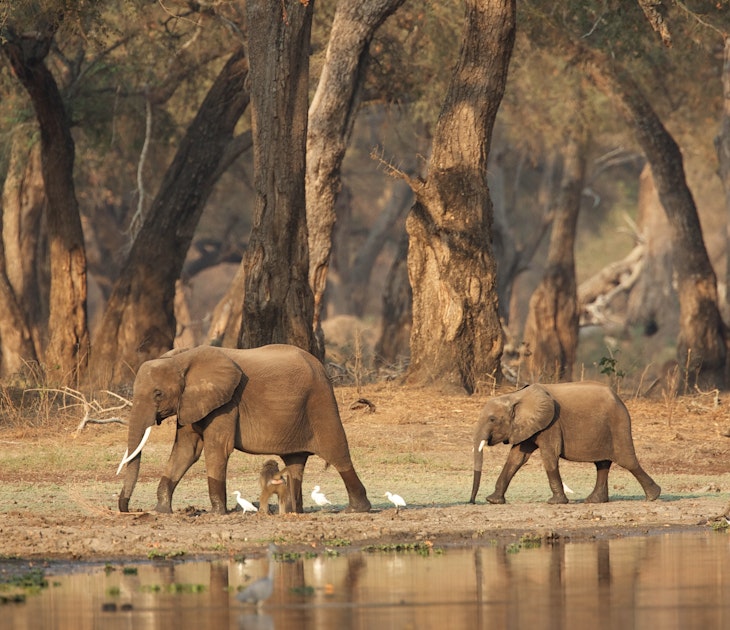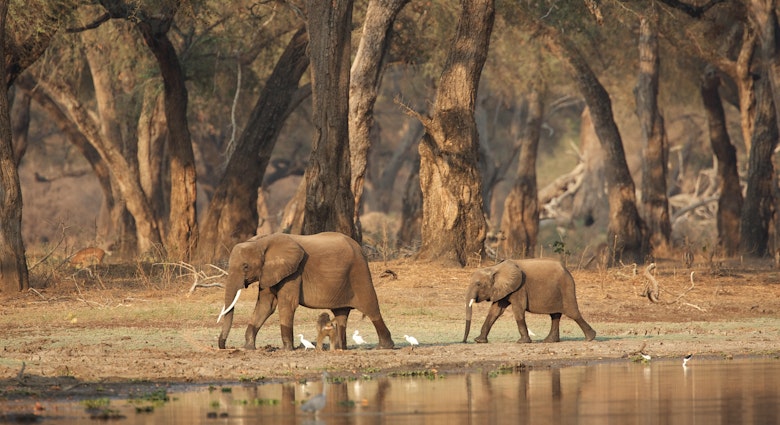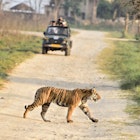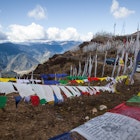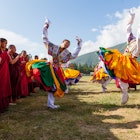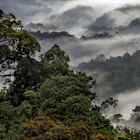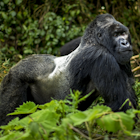Most everyday experiences are lessons in the inevitable pull of the future: books are replaced with e-books, laptops are replaced with tablet computers, billions of dollars are replaced with trillions of dollars, fresh is replaced with cling-wrapped. When travelling, however, you may find fragile environments that have resisted the future. There you will experience a moment more concerned with the present or the past and time will seem to stand still. Here are some places to go and things to do for those times when you just want the world to stop spinning for a while.
Mountain gorillas, Rwanda & Uganda
Image by naamanus
Few experiences compare to crouching within a whisper of the greatest of the great apes and holding your breath because there's nothing separating you from these amazing animals except for a rather tangled family tree. This is all thanks to the willingness of mountain gorillas in Rwanda's Parc National des Volcans and Uganda's Bwindi Impenetrable National Park to let you get close to them. You'll only spend an hour in the vicinity of the gorillas once you've tracked them in their native jungle, but those 60 minutes will endure for a lifetime.
Bhutan
Image by jmhullot
The Kingdom of Bhutan, known to its inhabitants as Druk Yul (Land of the Thunder Dragon), is imagined by many outsiders to be a land frozen in a highly traditional past. This is not true – a thoughtful programme of modernisation began here 40 years ago. However, Bhutan's culture is underpinned by an ancient Buddhist mythology, emblemised by the ethereal dzongs (fort-monasteries) of the Bumthang region. Combined with Bhutan's extraordinary geography, it's this that brings visitors to a standstill while they're trekking between Himalayan peaks in the north, delving into deep central valleys, or roaming the rolling southern hills.
Djenné Mosque, Mali
Image by 300td.org
The mosque in the island-bound Mali town of Djenné seduces travellers with the mudbrick hue of its fortresslike exterior and the large supporting cast of wooden beams that protrude through the walls into the brilliance of the African sun. So captivating is this earthen marvel, the world's largest mud-brick structure, that it makes little difference to the experience to learn that the current building only dates from 1907. It was modelled on the Grande Mosquée erected on the same site in 1280; the original building fell into ruin in the 19th century.
Amazon River, Brazil
Image by passer-by
A slow trip down the world's second-longest river means unbearable monotony to some, but glorious idleness and immersion in nature's timelessness to others. To decide for yourself, board one of the gaiolas (river boats) that navigate the Brazilian Amazon between the interior settlement of Manaus and the port of Belém. These boats get insanely crowded and their open-sided nature (hence the name, which means ‘birdcage') guarantees exposure to fierce Amazonian rainstorms. But just climb into a hammock near the railing, consign the sounds of boat life to background noise, and lose yourself in the passing of the world's greatest rainforest.
Antarctica
Travel to Antarctica is expensive. Getting there by boat also involves a challenging sail across the Southern Ocean from bases like Hobart (Australia) and isolated Punta Arenas (Chile). But those who make the trip are rewarded with close-up views of the stunning cliffs marking the extremities of ice shelves, mountainous icebergs, the wildlife of the island-crowded Antarctic Peninsula, and fierce sunsets that can last for hours. Notwithstanding the presence of other cruiseship passengers, visitors also get to experience a glacial solitude that freezes the present.
Serengeti National Park by balloon, Tanzania
Image by wwarby
Imagine being hoisted up into the sky at daybreak and sailing serenely over expansive savanna plains dotted with wildlife, warmed by the rising sun and with only the occasional sound of a burner to break the silence. Such is the experience you'll have in Tanzania's epic 1.5 million–hectare Serengeti National Park if you forego the standard on-the-ground safari and opt instead for a hot-air balloon odyssey over this African wildlife playground. The trip is at its most dramatic in May and early June when massive herds of wildebeest and zebras dodge predators during their annual migrations.
Mont St-Michel, France
Image by JackVersloot
Mont St-Michel is a mesmerising mix of town, castle, island and abbey. The Benedictine abbey's striking Gothic architecture was completed in the 16th century and is surrounded by a village that is in turn surrounded by defensive ramparts and towers, all of it perched on a large granite islet in the English Channel that's connected by a causeway to Normandy's shoreline. Mont St-Michel is often rated as France's most visited attraction, hence its narrow streets get absolutely jammed with pilgrims and other visitors. Some prefer to gaze at it from a distance and meditate on the beauty of its silhouette against the surrounding bay.
Swimming with whales, Tonga
Image by Antoine Hubert
Between June and November, humpback whales congregate in Tonga to mate and breed. Observing the whales from the deck of a boat as they slowly frolic and occasionally slap their flukes on the water's surface is one thing. But strapping on a snorkel and paddling amongst these majestic cetaceans is something else entirely, particularly when a mother and calf are nearby. Swimming with whales is mostly undertaken around the Vava'u and Ha'apai island groups.
Petra, Jordan
Petra is an ancient city that was sculpted out of sandstone cliffs in the southern deserts of Jordan to become the capital of the Nabataeans. This staggering feat of rock-carving is entered via the Siq, a narrow, high-walled gorge that leads directly to Petra's Treasury – the squeezed view of its elaborate façade from within the Siq has to be one of the world's most snapped photographs. Many visitors devote themselves to the hillside tombs along Petra's one ‘street'. But for some quiet reflection and an awesome view, tackle the more than 800-step climb up to the monastery.
Lhasa, Tibet
Image by watchsmart
The name of the Tibetan capital means ‘Holy City', a fitting description for a city lodged in the Himalayas at an altitude of about 3600m and the spiritual centre of Tibetan Buddhism. The thin air will take your breath away, but so will the incredible spectacle of the surrounding Himalayan peaks and the golden-roofed Jokhang Temple. And, unlike the exiled Dalai Lama, you can also enjoy the serenity of Potala Palace. Most beguiling, however, is the indomitable cheerfulness of the Tibetan people amid the impositions of Chinese administration.
Also read our article on Time travel: 5 great places to get your history fix.
This article was updated in Jan 2012.









